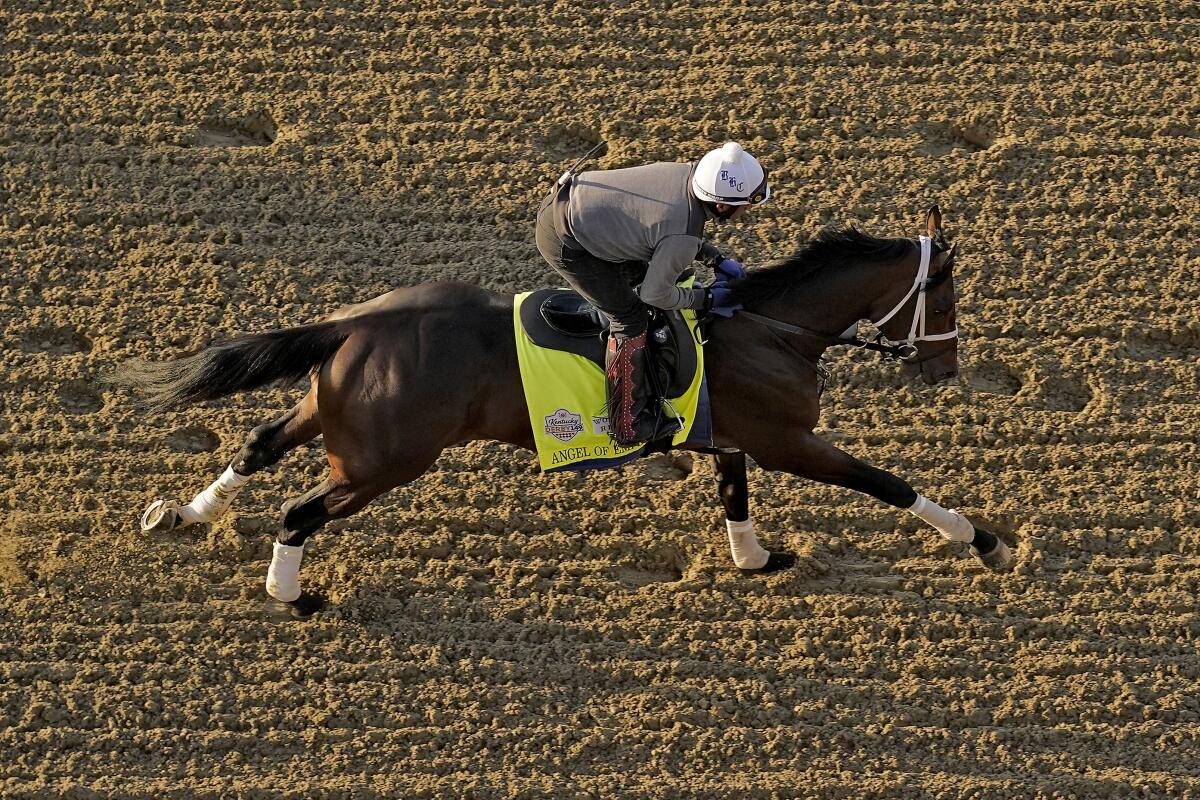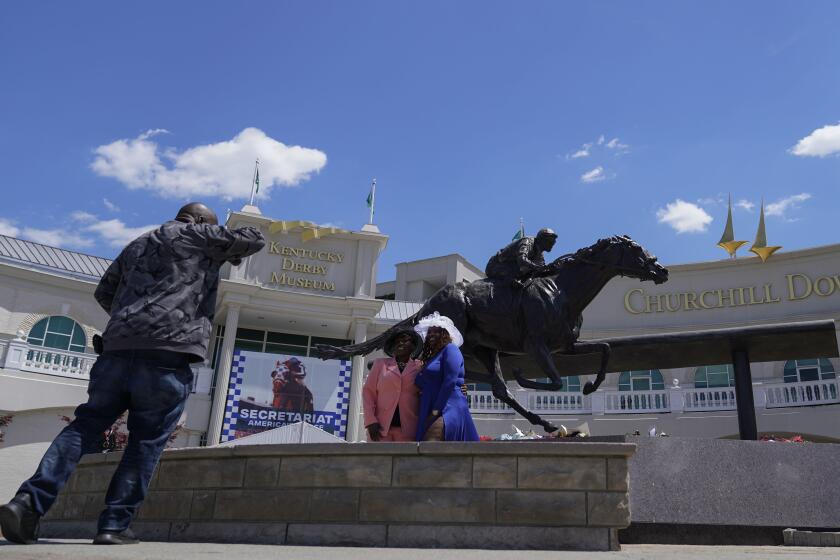Editorial: How many more racehorses must die before the sport changes or goes away?

- Share via
Horses started dying at Churchill Downs 10 days before the Kentucky Derby, and the death toll didn’t cease until hours before the famous race began last Saturday. By the time the Derby began, seven horses would be dead.
Wild on Ice, the first to die, suffered an injury in training and was taken to an equine hospital where he was euthanized. A couple of days later, Parents Pride died on the track. Later the same day, Code of Kings flipped over in his paddock and broke his neck, seemingly freaked out by lights at a nearby DJ’s booth. The horse was put down. Take Charge Briana collapsed during a race and had to be euthanized. Chasing Artie collapsed after finishing a race. Chloe’s Dream, a 3-year-old gelding, suffered a right-knee fracture in a race earlier in the day before the Derby. Freezing Point, a 3-year-old colt, suffered a sesamoid bone fracture during another race before the Derby. Both horses were euthanized.
Along the way, the Kentucky Horse Racing Commission and Churchill Downs suspended Saffie Joseph Jr., the trainer of two of the horses, while the deaths were being investigated. The Derby was run without incident.
There is an inherent risk when a 1,100-pound animal runs nearly 40 mph on relatively small feet and lean legs. That risk can’t be reformed out of existence.
Even with veterinarians scrutinizing horses and pulling five from the Derby lineup out of concern for their health, this kind of carnage has become the seemingly unavoidable byproduct of horse racing. And not just at the most famous track in the country but also periodically at racetracks across the U.S. A spate of deaths at Santa Anita Park in Los Angeles County left more than three dozen horses dead in a racing season that ran from the end of December 2018 through November 2019. Stricter protocols on drug usage and closer monitoring of horses at that track have lessened the casualties.
Churchill Downs released the obligatory statement of sadness and a pledge to do better: “The equine fatalities leading to this year’s Kentucky Derby are a sobering reminder of the urgent need to mobilize our industry in order to explore every avenue possible and effectively minimize any avoidable risk in the sport.”
Saturday is the 149th Kentucky Derby at Churchill Downs. Here’s our coverage:
They could start with routine low-radiation CT imaging of horses’ ankles within 24 hours of a race. “That would be a real game changer,” says Kathy Guillermo, an official with People for the Ethical Treatment of Animals, who has worked for years on horse racing reform and consulted with officials at Santa Anita. (Most tracks do scanning only when a veterinarian suspects there might be a problem. But horses can’t tell you when they hurt, and sometimes they don’t show you.) She also advocates for synthetic racetracks, which she says are safer for horses.
Horse racing overall needs to be accountable to the new national standards passed by Congress in 2020. The federal Horseracing Integrity and Safety Act survived several court challenges. The legislation created the nonprofit Horseracing Integrity and Safety Authority, which will set rules on protection of horses including the use of drugs and whips. Rules could go into effect as soon as this month.
We should not accept a sport that, even when its officials and participants say they are trying to do better, routinely allows horses to die. That’s not a sport that any of us should want to endorse.
More to Read
A cure for the common opinion
Get thought-provoking perspectives with our weekly newsletter.
You may occasionally receive promotional content from the Los Angeles Times.











